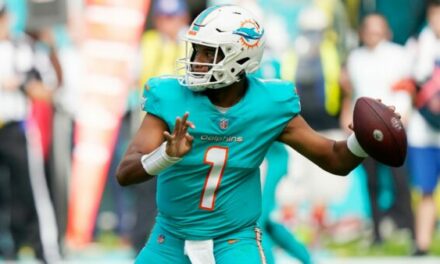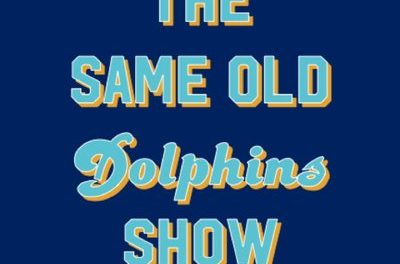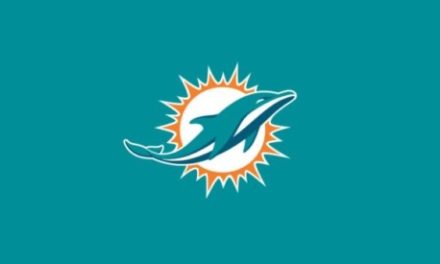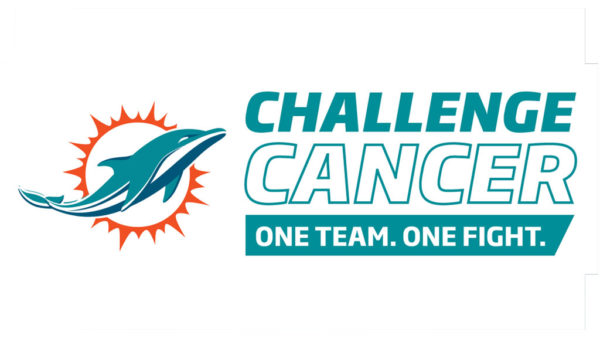The NFL Draft will be here before we know it, and unlike in recent years, Miami has draft picks in rounds one and two this year. The question is what they will do with them. Well, I am here to lay out the three most likely draft strategies for the Dolphins in 2024.
Before I start, though, we have to lay out Miami’s top three needs heading into this draft. And don’t worry—any signing they make between today, March 23rd, and night one of the draft won’t change this. There isn’t a player out there that Miami can afford or that is available that would move the needle enough to turn a position from “need” to “no longer a need.”
The three top needs (in no special order) are Wide Receiver, Offensive Line, and Defensive Line.
So, with that said, let’s look at the three strategies.
Strategy #1
Double-Down on Defensive Line
The Miami Dolphins lost Christian Wilkins and Raekwon Davis and haven’t filled either spot as of yet. Yes, Miami signed a bunch of defensive linemen like Jonathan Harris, Benito Jones, Neville Gallimore, Daviyon Nixon, and Isaiah Mack. For the most part, all career backups and run-of-the-mill NFL players.
While Raekwon Davis wasn’t exactly Michael Strahan, he was a starting-caliber defensive tackle in the NFL. We know Christian Wilkins is a very good 3-4 defensive end who can also slide over and play defensive tackle. Now, he is one of the highest paid as well.
If you are the Dolphins, the best answer for replacing them and finding long-term answers to fill those spots is in the draft; why not double down in Rounds 1 and 2 this year and take two players who fit the new scheme you are running? Hopefully, they can come in and contribute in year one, and maybe both will be starters for you next to a Zach Sieler by year two at the latest.
Miami has a pretty good secondary with Jalen Ramsey, Kendall Fuller, Jevon Holland, Jordan Poyer, and Kader Kohou. With a linebacker group that boasts Jordyn Brooks, David Long, Shaq Barrett, Jaelan Phillips, and Bradley Chubb when those last two names return. An absolute stud on the defensive line in Zach Sieler (as well as five backups on the defensive line). Why not look to add two young guys, one of which will be a Top 21 pick, to put in the mix on the defensive line to give this defense what it really needs in 2024, which is some beef up front?
Possible scenarios are…
Pick #21 go Byron Murphy II or Jer’Zhan Newton
Pick #55 go T’Vondre Sweat or Ruke Orhorhoro
You would have a front seven with a good mix of youth and veterans, as well as two players who hope to be here long-term and develop into mainstays on your defensive line, along with Zach Sieler.
With this strategy, the question is, how do you fill the other needs on your roster, such as wide receiver and offensive line? I think wide receiver is easy; try to sign Odell Beckham Jr on a one-year deal. If not him, Michael Gallup, DJ Chark, or someone along those lines. And with the offensive line, I have to be honest: if Connor Williams is able to go this year, sign him in the summer and wait it out the first month or two until he can return to the field to play. He or Aaron Brewer can move to guard; you have your starting two tackles, and then let Lester Cotton, Isaiah Wynn, and Liam Eichenberg fight it out for the other guard spot.
Strategy #2
Fill the Holes on Offense
This strategy makes a lot of sense because the NFL is always changing, and in this era, it is truly an offensive league. The old saying “defense wins championships” has gone by the wayside. The modern NFL is to throw the ball three times for every one time you run it, score early and often, and hope your opponent can’t keep up. The day of ball control and strong defense just isn’t a winning formula anymore.
So, if you throw more, you need offensive linemen who can pass block and numerous wide receivers. Miami is essentially running it back with the same offensive as we sit today. Replace Connor Williams with Aaron Brewer (slight downgrade but not huge), and in this strategy, use a pick in Rd 1 or 2 to replace Robert Hunt.
Miami is top-heavy at wide receiver. Tyreek Hill and Jaylen Waddle are outstanding. But there is zero depth behind them, and as we saw in 2023, once one or two go down and are less than 100%, the offense either struggles or stops operating at an acceptable level to win meaningful football games.
The Braxton Berrios and River Cracrafts of the world just don’t get the job done and are not “serious” depth at either position.
The other thing to keep in mind is that if you are going to give Tua a long-term extension of, on average, $45 to $50 million per season, then you better build around him and protect your big investment by giving him protection on the line of scrimmage and more weapons to throw.
With this strategy, you can go WR at 21 and Offensive Line at 55 or vice versa. Let’s play out some scenarios each way. Kind of like when your playing Lucky Lightning Demo.
WR in Rd 1, O-line in Rd 2
Pick #21 Brian Thomas Jr, Adonai Mitchell, Troy Franklin, or Xavier Worthy
Pick #55 Kingsley Suamataia, Zach Frazier, Christian Haynes, or Cooper Beebe
Going wide receiver first, you get a top WR in a class loaded at this position and would arguably be a Top 2 or 3 WR in another draft year. Pair that person with Hill and Waddle, and you have a 3-headed monster of pass catchers. And if Hill’s off-the-field trouble continues to the point he gets suspended, you have someone to step in. If Waddle is gone after his 5th-year option ends, you have someone to step in and fill that shoe. Makes both short-term sense and long-term sense.
And with the offensive linemen in Round 2, you get someone who can compete for a starting role as a rookie (remember most offensive linemen taken in Rd 1 struggle mightily or don’t start out of the gate, so taking one in Round 2 you remove some of that pressure from the kid selected) and hopefully in year two is someone you can pencil in as a starter.
O-Line in Rd 1, WR in Rd 2
Let’s look at it the other way and flip-flop this.
Pick #21 Troy Fautanu, Graham Barton, Jackson Powers-Johnson, Amarius Mims, or Tyler Guyton
Pick #55 Malachi Corley, Ricky Pearsall, Xavier Legette, or Roman Wilson
Going at it this way, you still get a high-end WR who should be able to contribute in year one as a WR3 or, at worst, WR4, who in year two should be solidified as a WR3. And you are addressing your offensive line and pass blocking with a Top 21 pick. And Miami can go any way they want with the offensive line pick. They can grab a center and move Aaron Brewer to RG to replace Hunt. They can draft an offensive tackle, kick him inside to left guard for a year as we did with Laremy Tunsil, and have him be Terron Armstead’s long-term replacement moving forward. Or draft a true guard who is being brought in to replace Robert Hunt. There is no wrong answer here, and Miami’s offensive coordinator, Frank Smith, will be smiling on draft weekend.

Strategy #3
Best Player Available
One of those buzzwords or buzz-sayings you hear around draft time is BEST PLAYER AVAILABLE. The elite teams in the NFL can use this strategy and be very successful. If you are in San Francisco, Philadelphia, Detroit, Kansas City, or Baltimore, you have a pretty stacked roster with no real holes that keep you up at night. And when you’re on the clock, you just take the overall best player, and whatever position he plays doesn’t matter because you are just continuing to improve your roster.
This strategy for THOSE teams is great, and they should all use it. For a team like Miami, in its current state in 2024, I’m not so sure.
Let me make this perfectly clear: any team that drafts BPA or BEST PLAYER AVAILABLE isn’t doing anything wrong, and overall, it is the right approach. If you are in year one or two of a rebuild, it is 100% the right approach to take. But if you are a team trying to become one of those elite teams in the next year or two and take that next step up a level, kind of like Miami is, from going to just sneaking into the playoffs and having a quick round 1 exit to maybe winning a division and a playoff game or two, not sure this is a wise approach.
What happens if, when you are on the clock at Pick #21, the BPA is a cornerback? or a Running back? Do you ignore your glaring holes on the offensive and defensive line and the wide receiver depth to add yet another cornerback to the roster? Then come Pick #55 BPA, which is a tight end. Well, Miami just signed two free agents at tight end this offseason. Do we need to add a third? Especially when we have a capable NFL player like Durham Smythe on the roster?
So, in rounds one and two, we won’t address the glaring needs we have? Are they going to magically fix themselves?
This approach throws “needs” out the window and looks at the big picture of roster construction overall. In the big picture of roster construction, you just ultimately truly raise the overall talent base of your roster, and in time, you will have a great 1-53-man roster that can compete with any team. It just may not be right away.
Again, this is NOT a bad draft strategy; it’s a strategy more teams should do, in all honesty. And if the Dolphins take this approach, I get it. I think it means we are totally hitting the reset button and may not be “contenders” in 2024 or 2025, but that doesn’t mean it’s the wrong approach.
I won’t play out scenarios here, as there are far too many, and literally nothing is off the table.
So those are my Top 3 Dolphins Draft Strategies. I know there are countless others, like take offensive linemen and a defensive tackle. Or take a wide receiver and safety, and while that may be the approach the Dolphins ultimately end up taking, I think the three I laid out are the best three strategies for long-term success for the Dolphins organization.
(NY POST MOCK DRAFT HAS MIAMI SELECTING)
NY Post Mock Draft has Miami Addressing the Offense in Round 1














What about trading down to maybe 26. 27, still grab a good offensive lineman, Barton, perhaps, and get that extra pick.
In round two take the best available DT, maybe Sweat is still there, and if it is a 4th rounder that was obtained in the trade down, then take the WR at that point. These three picks then help to offset the remaining holes on the team.
Yeah predicting trade downs is tough, we have no idea who wants to trade up and such. Plus, if your Miami you know for a fact 5 QB’s will go in the Top 20, then 3 of the Top WR’s will be gone, and a TE. Taking that off the board between the OT, Edge, DT, Center, and the 4th WR on…Miami is going to get an elite player at a position of need so I would be careful of trading down. But if it makes sense go for it.
No defensive tackle or nose tackle in this draft is worth a top fifty draft pick The Texas nose tackle as a run stopper is with a flyer in late second rounder because of athleticism but not based on production in college against college offensive linemen. Dolphins have zero pro bowl caliber or even average starters in last two drafts. Frankly last two drafts complete bust, except for Achane who wasn’t a need pick. Your first four rounds should always be potential blue chip starters no matter position of need. Only draft for need rounds 5 through 7 because those are your developmental players or backups not starters If you draft for need you build average to losing teams. Draft best player on board even if position of strength like receiver because sooner or later you lose one of your starter to injury or unaffordable contract but you have another stud to step right in.
We NEED a quarterback!! A good NFL quarterback has mobility and can run a two minute offense, Tua is neither. If the dolphins get behind, it’s game over. Tua will NEVER win a playoff game and always puts a hand full of passes up for grabs in each game. Serviceable is his ceiling.
Bo Nix is projected to be available, it would be foolish to pass on that talent and potential, if we have a shot at him. Playoff winning quarterbacks can run for a first down when needed, Nix can do that.